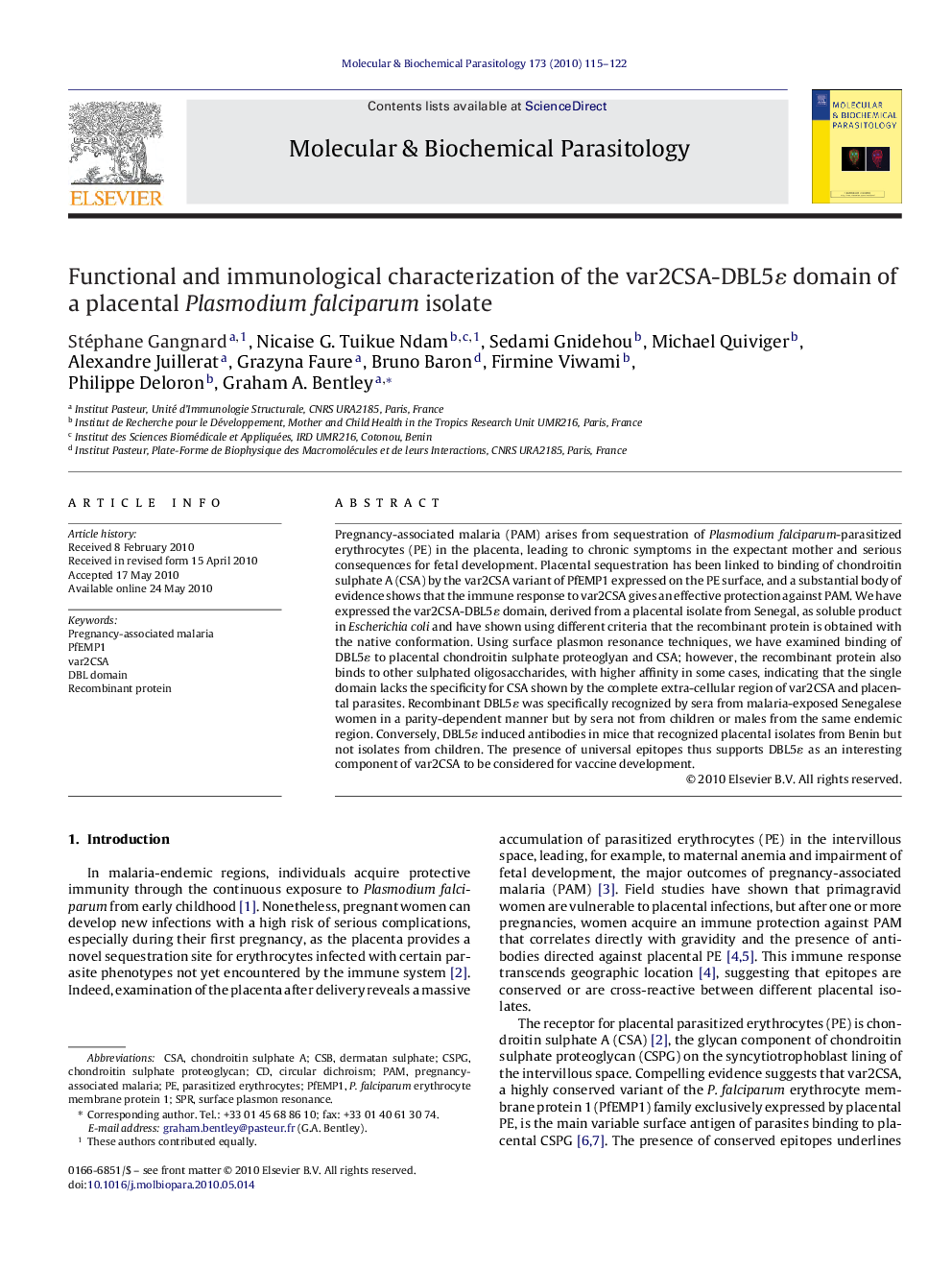| Article ID | Journal | Published Year | Pages | File Type |
|---|---|---|---|---|
| 5915753 | Molecular and Biochemical Parasitology | 2010 | 8 Pages |
Pregnancy-associated malaria (PAM) arises from sequestration of Plasmodium falciparum-parasitized erythrocytes (PE) in the placenta, leading to chronic symptoms in the expectant mother and serious consequences for fetal development. Placental sequestration has been linked to binding of chondroitin sulphate A (CSA) by the var2CSA variant of PfEMP1 expressed on the PE surface, and a substantial body of evidence shows that the immune response to var2CSA gives an effective protection against PAM. We have expressed the var2CSA-DBL5É domain, derived from a placental isolate from Senegal, as soluble product in Escherichia coli and have shown using different criteria that the recombinant protein is obtained with the native conformation. Using surface plasmon resonance techniques, we have examined binding of DBL5É to placental chondroitin sulphate proteoglyan and CSA; however, the recombinant protein also binds to other sulphated oligosaccharides, with higher affinity in some cases, indicating that the single domain lacks the specificity for CSA shown by the complete extra-cellular region of var2CSA and placental parasites. Recombinant DBL5É was specifically recognized by sera from malaria-exposed Senegalese women in a parity-dependent manner but by sera not from children or males from the same endemic region. Conversely, DBL5É induced antibodies in mice that recognized placental isolates from Benin but not isolates from children. The presence of universal epitopes thus supports DBL5É as an interesting component of var2CSA to be considered for vaccine development.
Graphical abstractThe var2CSA-DBL5É domain derived from a placental isolate has been expressed in soluble native form using Escherichia coli. The domain binds to placental CSPG (KD = 140 μM) and is recognized by the sera of women who have had placental infections. It also induced antibodies that recognized other placental parasites and the FCR3 laboratory strain.Download high-res image (217KB)Download full-size image
